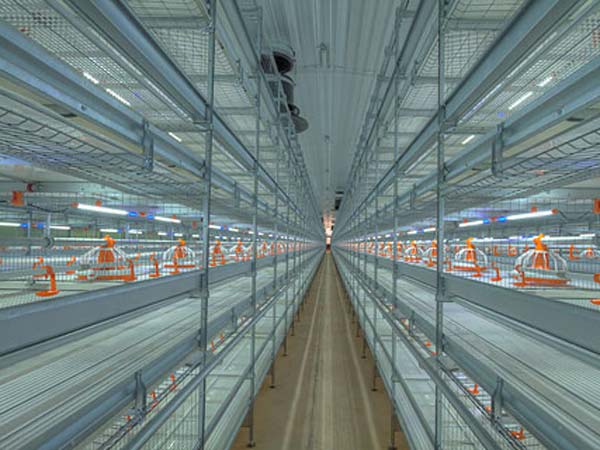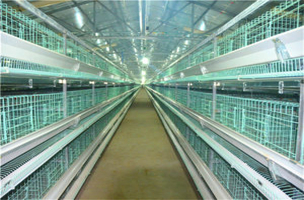Prevent broiler hypoxia in winter
- Published in Chicken cages
The weather in winter is relatively cold. In order to keep most of the windows, there are few windows to open, but care should be taken to prevent unnecessary loss of oxygen in the chicken house. So what should be done to prevent broiler hypoxia in winter?

1. Strengthen the ventilation inside the house, the air in the chicken house should be fresh, and the chicken grows well. Because chickens need more oxygen, only the ventilation in the house can strengthen the chickens to have enough fresh air. Generally, it is ventilated once every 2 to 3 hours, 20 to 30 minutes each time. Increase the temperature before ventilation, and pay attention to avoid blowing the wind directly to the chicken body to prevent the chicken from getting sick.
2, broilers are generally raised in large groups, high density, a large number, easy to make oxygen in the air, carbon dioxide increased. Especially when high temperature brooding and chickens have high humidity, long-term lack of fresh air often causes chicks to be weak and sick, and the rate of dead chickens increases. In chicken houses with high stocking density, the chances of air diseases increase, especially when the ammonia content is high, respiratory diseases are often induced. Therefore, to control the stocking density, 9 chickens weighing about 1.5 kg per square meter can be doubled if they are kept on the net.
3, pay attention to the insulation method, some farms only emphasize heat preservation, but neglect the ventilation, resulting in severe hypoxia in the chicken house poultry equipment manufacturer.
4, to prevent stress, chickens are scared, any new sounds, colors, unfamiliar movements and the sudden appearance of items, will cause the chicken to be uneasy, screaming, so that the group, the group, etc., these stress will consume The large physical capacity of chickens increases the oxygen consumption of chickens and is more harmful to the growth and weight gain of chickens. Therefore, the flock must be kept quiet and stable to alleviate the damage caused by various stresses.

